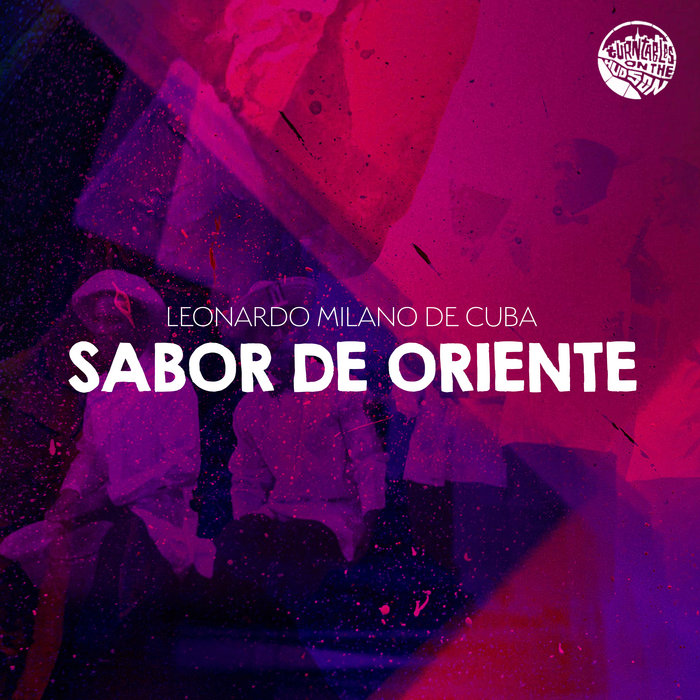
Sabor De Oriente – Turntables on the Hudson
this blog is GROOVY – check out great Soul, Funk, Jazz, Hip Hop, Bass, Breaks , Reggae, House n many more TUNES
Changüí is like the funky cousin of Latin music that you never knew you needed! Born in the lush landscapes of Eastern Cuba, this genre has a rich history that dances through time. So, grab your maracas and let’s groove through the evolution of Changüí!
Changüí emerged in the late 19th century as a rural musical style, primarily from Guantánamo province. It’s characterized by its upbeat rhythms and catchy melodies. Think of it as a joyful mashup of son cubano and traditional Afro-Cuban influences. You can imagine farmers taking breaks from their hard work to jam out with guitars (called “tres”) and the rhythmic beat provided by claves.
The roots run deep for changüí! This genre was influenced heavily by African rhythms brought over during colonial times mixed with Spanish folk melodies. Picture this: African drums pounding away at dusk while singers belt out stories about love, struggle, and daily life under the Caribbean stars.
One thing’s for sure—changüí isn’t afraid to get down and dirty with improvisation! Musicians often take turns showcasing their skills in an informal jam session known as “guateque.” Just imagine everyone getting hyped up, laughing, and challenging each other to bring their best tunes forward—good vibes only!
When it comes to instruments used in changüí, we’re looking at some serious party starters! Here are some staples:
And let’s not forget about cowbells—they’re like sprinkles on top of an already delicious cake!
Now let’s add some fun facts into our rhythm mix because who doesn’t love a good chuckle?
Conga Line Fun: One famous changüi musician once started performing just because he wanted free rum at local parties. Who needs motivation when there’s free booze involved?
The Great Tres Tuning Disaster: There was this legendary guitarist who spent hours tuning his tres before every performance but always forgot how he tuned it right after enjoying one too many mojitos backstage!
Dance Offs Galore: In guateques across Guatemala (yes folks, changüi found its way there too!), musicians would challenge each other not just musically but also through dance-offs! Imagine epic battles where someone slips mid-twirl—it could get messy yet hilarious!
“Google It!” Before Google Was Cool: Some musicians’ lyrics were so obscure they actually asked fans post-show if anyone could tell them what they had just sung about… talk about crowd-sourced lyric explanations!
As time rolled on into the 20th century, changüí took new forms but kept its roots intact—from lively celebrations in small villages to being performed on big city stages.
By the 1940s/1950s, alongside salsa’s rise to fame worldwide came more attention towards Cuban regional styles like ours! It became trendy among urban youth craving authenticity amidst pop culture’s floodgates opening wide open.
A pivotal moment occurred when bands like Los Guaracheros blended classical elements into their sound which attracted radio airplay across Latin America—even reaching North American shores eventually leading up towards integration within jazz genres later down the line.
Today? Well folks—you’ll find modern artists remixing traditional sounds making them relevant again using hip-hop beats or even electronic vibes mixed beautifully transforming hearts along different age groups all around globally!
Let’s give a shoutout to current legends keeping this vibrant culture alive:
These artists can surely turn any gathering into an unforgettable fiesta filled laughter & joy no matter where you are dancing from home or clubbing till sunrise brightening up spirits effortlessly echoing memories long past reminding us how powerful genuine artistry remains throughout generations still today embracing cultures boldly without hesitation whatsoever…
So here we are groovin’ along our colorful ride exploring what makes changület such an irresistible genre transcending space-time barriers despite changing over decades mixing old flavors with fresh zest upliftingly uniting people throughout generations allowing creativity flow freely reflecting cultural identity uniquely expressed delightfully celebrating life—with laughter filling airways alongside beautiful melodies echoing near sky-high clouds encircling all doing nothing short than spark joyous moments together… now go lace up those dancing shoes; it’s time for another round at your next fiesta featuring none other than our beloved Changülì tracks—the spirit never fades away baby!

Sabor De Oriente – Turntables on the Hudson